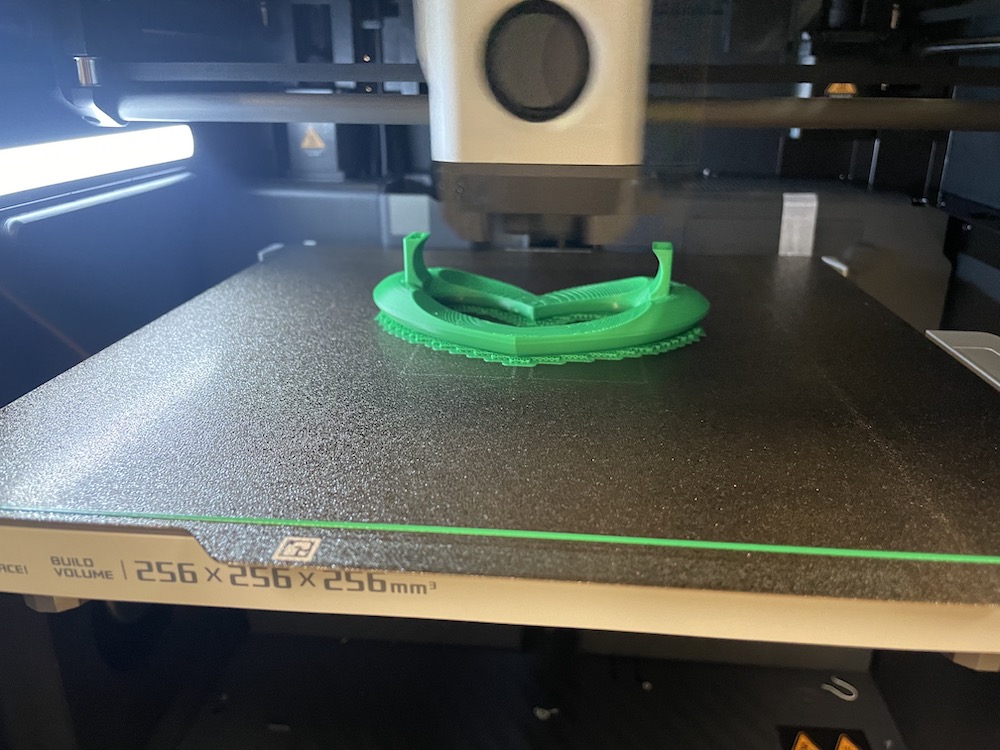Week 04 — 3D Scanning & Printing
3D Printing
As someone who has some experience 3D printing mostly doing massing models, I wanted to set a series of parameters for myself this week to see what kind of ideas I could come up with.
- The object is curved.
- The object has some sort of snap-fit onto an existing object.
- The object is small enough to have a < 2 hour print time.
I had been thinking of getting attachments for my airpod pro max but designs I liked were +$50, so I thought it would be good chance to experiment with design options.
I landed on a simple motif, hollowed out the center to save on filament, and two clips on either side. I was worried about the lack of flexibilty of PLA so I didn't want to risk scratching the headphones when I put them on.


First, for the group project we tested out the printers limitations using a test print guide. The Sinodah printers did not do a great job overall; especially at the overhangs and more delicate prints.
After this, I decided to print on the Bambu printers which also allowed for quicker print times. For slicing, I went with Bambu Studio.


For the first print, I tried messing with the settings too much, and parts of the inner heart didn't stick, leaving a stringy mess. It also was aborted have way through, either by someone stopping it or machine error.


For the second print, I changed the settings back to the standard template and increased the quality of the print. It printed all the way through but was still a bit stringy. The part that was facing the bed was also not very smooth. A classmate pointed out that the bed plate may not be hot enough On top of the bed plate being underheated (50C).


For the third print, I kept the settings but added supports and a raft. I also increased the bed plate temperature to 60C and changed the color for some variety. This print came out the best but still had a bit of texture on the front portion.


At this point of the week, the Bambu printers were all in use and I couldn't print out a second green heart. I swapped over to the Sinodah printers just so I could have a pair and surprisingly, they turned out all right.

click here for the stl file!
3D Scanning
The last time I had scanned anything was through a large scan LIDAR scan station (scanning trees) a few years ago. This time, I wanted to use just my phone to see how much things have evolved. I settled on the LumaAI app, as it was free.
This app using NERF technology to capture objects.
I wanted to keep with rules 1 and 3 of the 3D printing section, and settled on a candle. Specficcally, a candle that looked like a orange. My first attempts of scanning were not fruitful, and my phone was confused at where the object was located.
I think it was more to me and bad user error.


I tried again in studio and was a lot more sucessful. I needed to repair the manifold to make it a solid object in order to print, which I was able to do in blender with their 3D print add ons.


See image above for an unpeeled lowpoly orange. Printing in action with a bonus baby orange.


Real orange. A candle that looks like an orange. A 3D print that is orange of a candle that looks like an orange.

click here for the stl file!